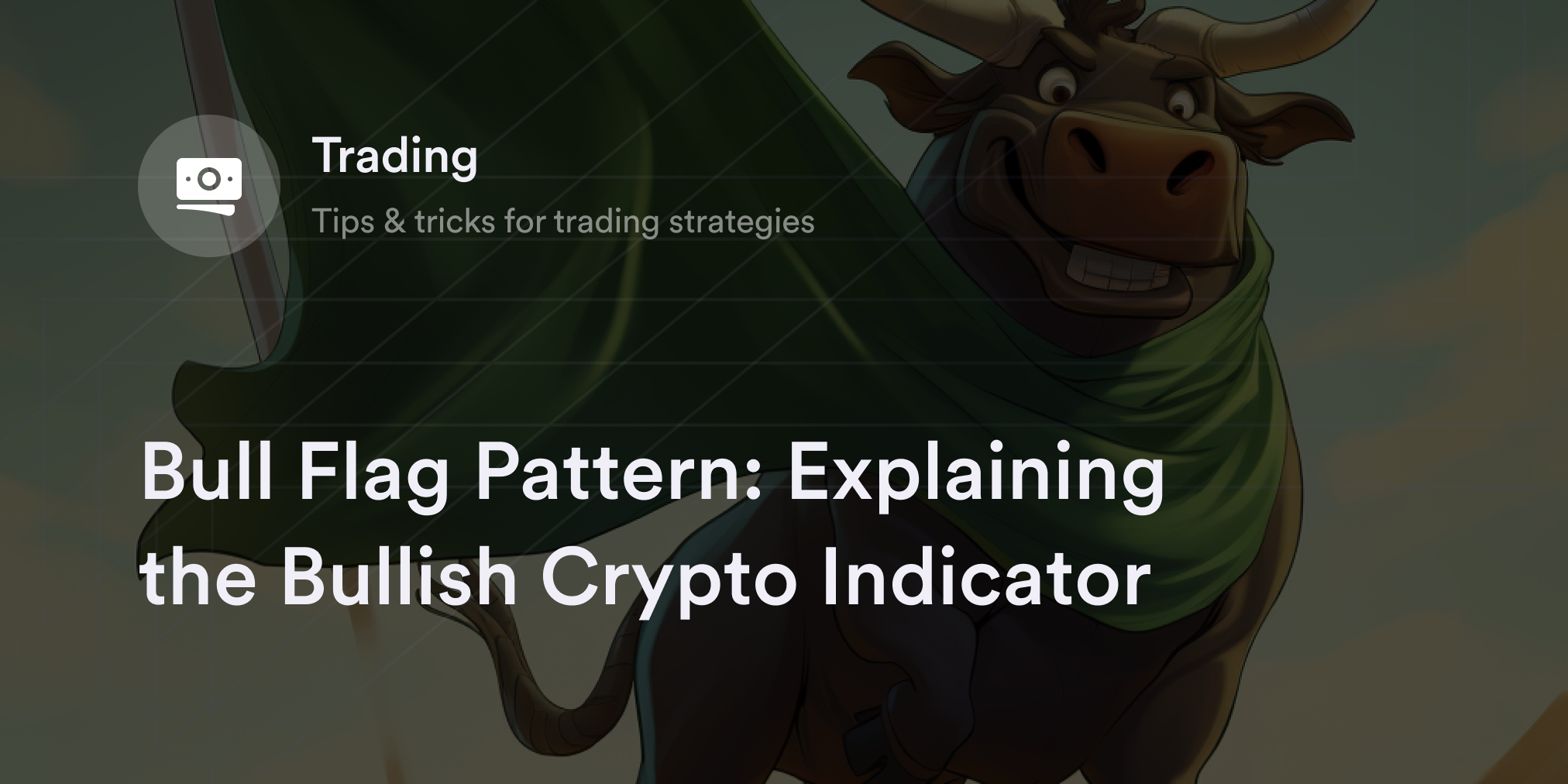


Highs in financial markets like crypto often bring a wave of optimism, persuading traders to engage more actively with digital assets. This euphoria, however, can quickly turn to caution as sudden market drops pose challenging scenarios, forcing traders to reassess their positions.
Amid these peaks and troughs, the double top pattern emerges as a critical signal, indicating a possible end to an asset's upward momentum and the start of a downtrend.
In this guide, we’ll review the aspects of a double top chart pattern, including what it indicates, how to identify it, and how to trade it in crypto. We’ll also discern the differences between double top and bottom patterns.
What is a double top pattern?
A double top pattern is a reversal pattern that occurs after an asset has endured a bullish period. The asset experiences an uptrend and hits a specific price peak, only to come crashing down to its support level or neckline. From there, the asset travels up again but peaks at a price shy of the one before. The asset then crashes harder, falling below its previous support surface. The security then becomes bearish and slips further into oblivion.

What does a double top pattern indicate in technical analysis?
A double top pattern hints at a long-term reversal for an asset. It can only occur if the asset peaks at or near the same price twice in a row, and these surges have a significant drawback.
During the first window, the asset falls to its present support level. During the second, it dips below, suggesting the uptrend is potentially over, the asset’s supply outweighs its demand, and sellers hold an advantage over buyers.
Here’s a real-world example of a double top pattern:
Stage 1: The first peak
In April 2021, Bitcoin (BTC) experienced a significant uptrend, reaching an all-time high near $64,800. This price level represented the first peak of a double top pattern. Traders were highly optimistic, with many expecting the bullish momentum to continue.
Stage 2: The trough
Following this peak, Bitcoin encountered a substantial sell-off, partly due to profit-taking and heightened regulatory concerns in various countries. The price found support around $47,000, creating a trough between the two peaks. This price decline was a normal retracement that often occurs after a significant price increase.
Stage 3: The second peak
After finding support, Bitcoin's price began to climb again in the following months, driven by sustained interest and optimism in the crypto market. By June 2021, it approached the previous high but struggled to sustain momentum above the $64,000 mark, forming the second peak. This resistance level indicated a lack of buying pressure to increase the price.
Stage 4: The breakdown
The double top pattern’s confirmation occurred when Bitcoin's price fell below the support level established by the trough, around $47,000, signaling a bearish reversal. This breakdown increased selling pressure as traders interpreted the pattern as a sign to exit their positions or short the market.
How to identify a double top stock pattern
Identifying the double top pattern in stocks or crypto involves recognizing specific chart formations that suggest an upcoming change in market sentiment. This process is crucial for traders looking to capitalize on or protect against price reversals. The following steps outline how to accurately identify a double top pattern:
Look for an upswing
The double top pattern’s formation begins after a significant upswing in price. This upward trend indicates a strong bullish market sentiment, setting the stage for the pattern to develop.
Find the initial peak
The first peak is formed when the price hits a resistance level and stops rising. This peak represents a temporary halt in upward momentum, suggesting that the buying pressure is starting to wane.
Check for the trough
After the initial peak, the price will retract and form a trough. This pullback is essential, as it establishes the support level, which is critical for confirming the double top pattern. The trough’s depth can vary, but it should be significant enough to indicate a temporary shift from a buyers' to a sellers' market.
Find the second peak
The price will rise again to test the previous high, forming the second peak. This peak is crucial as it needs to be at a similar level to the first peak, indicating that the asset is struggling to surpass the previous resistance level. A notable difference in the two peaks’ height might suggest a different pattern or trend.
Determine the neckline
The neckline is drawn by connecting the lowest points of the price movement between the two peaks. This line represents a support level; a break below this line is considered a confirmation of the pattern and a potential signal for a bearish reversal.
Verify the pattern
Confirmation of pattern occurs when the price breaks below the neckline after forming the second peak. This breakdown is a critical signal that the previous uptrend has reversed, suggesting that lower prices may lie ahead.
How to trade a double top pattern in crypto
Trading a double top pattern in crypto or any other financial market requires a strategic approach, combining technical analysis with disciplined risk management. The steps below outline a methodical approach to trading a double top pattern, aiming to maximize potential gains while minimizing risks.
Confirm the pattern: Wait for the price to break below the neckline of the double top formation, confirming the bearish reversal signal.
Set an entry point: Enter a short position after the price breaks below the neckline, considering the neckline’s retest as a stronger confirmation.
Determine stop-loss: Place a stop-loss order just above the second peak or the neckline to limit potential losses if the market reverses direction.
Calculate the profit target: Estimate the profit target by measuring the height from the neckline to the peaks and projecting this distance downward from the neckline break.
Monitor and adjust: As the trade progresses, adjust stop-losses to break even or to lock in profits, depending on price movement.
Exit strategy: Exit the trade when you reach the profit target or if there are signs of a market reversal indicating a loss of bearish momentum.
Manage risk: Allocate only a reasonable portion of your trading capital to the trade to mitigate risk, considering the crypto market's volatility.
Pros and cons of trading a double top
The double top pattern can provide significant insights into market sentiment and future price movements. However, like any trading strategy, this pattern comes with its own set of advantages and disadvantages. Understanding these can help traders make more informed decisions and optimize their trading strategies.
Pros
Clear entry and exit signals: The pattern provides clear signals for traders on when to enter and exit trades, with the neckline break serving as a key entry point and the distance from the neckline to the peaks, offering a guide for setting profit targets.
High reversal probability: When properly identified, the double top pattern has a high probability of predicting a market reversal, offering traders an opportunity to profit from both the pattern’s completion and subsequent price movement.
Better risk management: The pattern facilitates precise stop-loss placements just above the second peak or the neckline, helping traders manage their risk effectively.
Cons
False signals: Like all technical patterns, the double top can produce false signals, leading traders to enter positions based on a predicted reversal that doesn't materialize, potentially resulting in losses.
Depends on timeframe: The pattern’s effectiveness can vary across different timeframes. It’s more reliable on longer timeframes than shorter ones, which may limit its utility for day traders or those looking for quick trades.
Requires confirmation: Trading on the initial formation of the pattern without waiting for confirmation can increase the risk of entering a premature or incorrect trade.
How do double top and double bottom patterns differ?
Both double top and double bottom patterns are important technical analysis tools used to predict reversals in market trends but signify opposite movements.
Unlike a double top pattern, a double bottom pattern features two consecutive troughs at roughly the same level, suggesting a reversal from a downtrend to an uptrend when the price breaks above the resistance level between the troughs.
Essentially, the double top is a bearish reversal signal, while the double bottom is a bullish reversal signal, each providing insights into potential shifts in market sentiment and price direction.
Learn more about technical indicators with dYdX Academy
Searching for information on charts, patterns, and tech analysis? Look no further than dYdX Academy, our in-house education hub that features guides on all things trading.
dYdX also offers eligible traders access to a decentralized platform with low fees. Find more about our products and platform on our official blog, and eligible traders can start trading on dYdX today.
Disclosures
The content of this article (the “Article”) is provided for general informational purposes only. Reference to any specific strategy, technique, product, service, or entity does not constitute an endorsement or recommendation by dYdX Trading Inc., or any affiliate, agent, or representative thereof (“dYdX”). Use of strategies, techniques, products or services referenced in this Article may involve material risks, including the risk of financial losses arising from the volatility, operational loss, or nonconsensual liquidation of digital assets. The content of this Article does not constitute, and should not be considered, construed, or relied upon as, financial advice, legal advice, tax advice, investment advice, or advice of any other nature; and the content of this Article is not an offer, solicitation or call to action to make any investment, or purchase any crypto asset, of any kind. dYdX makes no representation, assurance or guarantee as to the accuracy, completeness, timeliness, suitability, or validity of any information in this Article or any third-party website that may be linked to it. You are solely responsible for conducting independent research, performing due diligence, and/or seeking advice from a professional advisor prior to taking any financial, tax, legal, or investment action.
You may only use the dYdX Services in compliance with the dYdX Terms of Use available here, including the geographic restrictions therein.
Any applicable sponsorship in connection with this Article will be disclosed, and any reference to a sponsor in this Article is for disclosure purposes, or informational in nature, and in any event is not a call to action to make an investment, acquire a service or product, or purchase crypto assets. This Article does not offer the purchase or sale of any financial instruments or related services.
By accessing this Article and taking any action in connection with the information contained in this Article, you agree that dYdX is not responsible, directly or indirectly, for any errors, omissions, or delays related to this Article, or any damage, injury, or loss incurred in connection with use of or reliance on the content of this Article, including any specific strategy, technique, product, service, or entity that may be referenced in the Article.







